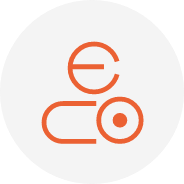Danikor Flexible Feeder: Solving Multi-Variety Mixed-Production Feeding Challenges
In today’s manufacturing landscape, multi-variety, small-batch production is becoming the norm, placing higher demands on feeding systems. Traditional vibratory bowl feeders face many limitations when handling materials of different specifications and materials—such as poor tray compatibility, time-consuming changeovers, and difficulty adapting to compact workstations. The Danikor flexible vibratory bowl feeder offers an effective solution to these challenges.

The tray of the Danikor flexible vibratory bowl feeder is designed with high compatibility, capable of accommodating materials of various materials and sizes. Whether metal, plastic, or electronic components, materials of different shapes and sizes can be arranged and conveyed in an orderly manner on the tray. Moreover, based on specific material characteristics—such as tendency to roll or carry static electricity—the tray can be customized with features like perforations, grooves, anti-roll structures, or anti-static coatings. These enhancements significantly increase the probability of materials being output in the correct orientation, reduce jamming or clogging, and ensure smooth feeding.
In multi-variety mixed-line production, quick material changeover is key to improving efficiency. The Danikor feeding system comes with multiple built-in material parameter programs. Each material has its own independent parameter set, including vibration frequency, feeding speed, and arrangement pattern. During changeover, operators simply select the corresponding material program with one click, and the equipment quickly adjusts to the new material’s working state. This greatly shortens changeover time, boosts production efficiency, and reduces downtime caused by material switching.
For special materials, Danikor also offers a quick-change tray function. When handling materials with significantly different materials, shapes, or sizes, operators can simply swap in a pre-customized tray to enable rapid changeover. This feature is not only simple and fast but also ensures the equipment quickly returns to high-efficiency feeding after tray replacement, meeting the flexibility demands of multi-variety production.

Additionally, the tray can be designed with a “one-to-many” configuration—dividing a large tray into multiple independent feeding zones. Each zone can be individually configured and adjusted for different material specifications. This design is especially suitable for compact workstations, making full use of limited space while meeting the feeding needs of multiple materials. In actual production, when used in conjunction with a robotic arm, the arm can pick materials from each zone in a preset sequence and place them accordingly. This enables small-batch, multi-variety mixed-line production, greatly enhancing flexibility and resource utilization.
Take the electronics manufacturing industry as an example. Electronic products often contain a wide variety of components—such as screws, chips, and connectors—each with different specifications and materials. On traditional production lines, each component typically requires a dedicated vibratory feeder, which not only takes up space but also involves complicated and inefficient changeovers. With the Danikor flexible vibratory bowl feeder, a single device can handle the feeding needs of multiple components. Through customized tray designs and quick program switching, various components can be delivered to the robotic arm in the correct orientation and sequence, significantly improving production efficiency and automation while reducing production costs and equipment footprint.
With its strong tray compatibility, rapid parameter switching, quick-change tray functionality, and one-to-many design, the Danikor flexible vibratory bowl feeder easily addresses feeding challenges in multi-variety mixed-line production. It provides a high-efficiency, flexible, and reliable feeding solution for modern manufacturing, helping companies achieve intelligent and automated flexible production—and gain a competitive edge in today’s fast-paced market.












